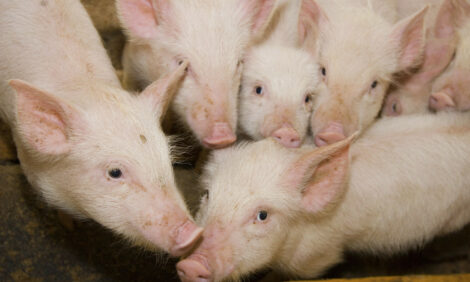 |
| Adjustments in the agricultural sector to increased demand for biofuels will continue as interest in renewable sources of energy grows. |
In response, red meat production is projected to decline in the United States and growth in poultry output is likely to slow. The impact of higher corn prices and feed costs is expected to be partially offset by the greater availability of distillers’ grains (from ethanol production) as a substitute source for feed.
Distillers’ grains are a co-product of dry-mill ethanol production that can be used for livestock feeding. As produced, distillers’ grains are relatively wet, with as much as 65-70 percent moisture content. This co-product can be used in its wet form, or it can be dried and used in a form with lower moisture content to facilitate shipment over greater distances, including for export. Additionally, distillers’ solubles from the dry-mill ethanol production process, which include other nutrients from corn, may be added to the distillers’ grains. Thus, the general term “distillers’ grains” refers to a number of forms of the co-product, including wet distillers’ grains, dried distillers’ grains, wet distillers’ grains with solubles, and dried distillers’ grains with solubles. Whether used in a wet or dried form, however, distillers’ grains used in livestock feed can replace some direct corn use, as well as soybean meal, in some animal rations.
Variance
The effects of higher corn prices will vary across livestock species, due to differences in feed conversion efficiencies and constraints on some animals’ ability to use distillers’ grains in rations. Distillers’ grains primarily benefit ruminant animals like beef cattle and dairy cows. Only limited amounts of distillers’ grains can be included in the rations of monogastric animals like hogs and poultry.
According to USDA projections, based on the different uses among the livestock species and a number of other important underlying assumptions, each bushel of corn used to produce ethanol results, on aggregate, in a reduction of about a fifth of a bushel of direct corn feeding, due to the use of distillers’ grains in rations. However, the substitution of distillers’ grains in feed rations is expected to bring only a small reduction in soybean meal use. Beef cattle are assumed to be the largest users of distillers’ grains, and beef cattle rations typically use urea as the protein source rather than soybean meal.
Variability in the quality of distillers’ grains from different sources—and from the same source at different times—also is a concern in the livestock sector. This lack of consistency in nutrient content makes it more difficult to determine the best use of distillers’ grains in livestock rations. Over time, adjustments in the market for distillers’ grains can address this issue. Adjustments in the ethanol production process are likely to improve the consistency of distillers’ grains for use in the livestock sector. And, as the market develops further, livestock producers will likely become more familiar with the product and learn how to better manage it in ration formulation.
Further Reading













